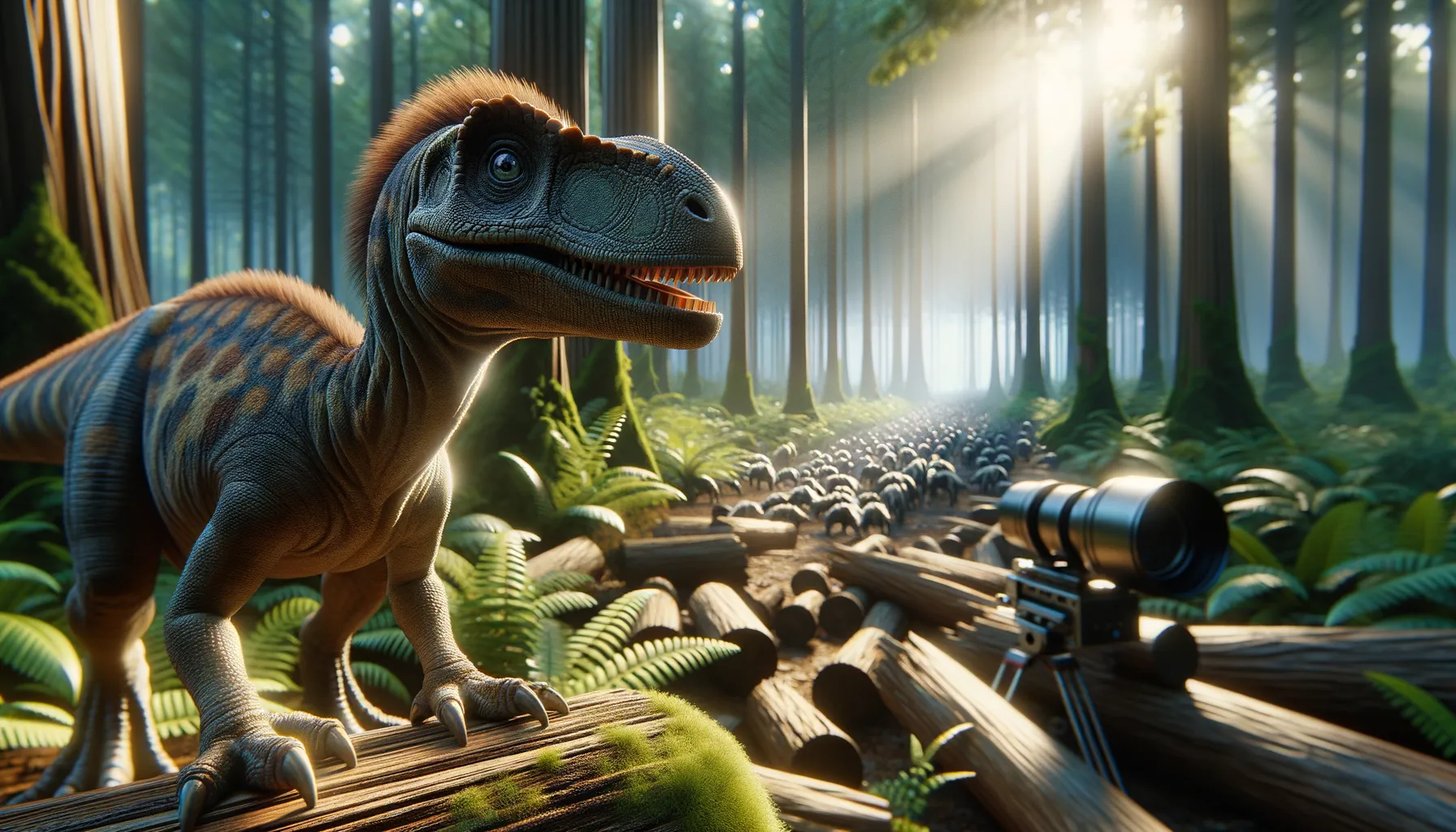
Nanosaurus
Small, gentle grazer of Jurassic forests.
Period
Jurassic
Length
Roughly 1.5 meters (5 feet) long.
Height
About 0.5 meters (1.6 feet) tall at the hip.
Weight
Approximately 20 kilograms (44 pounds).
Nanosaurus was a small herbivorous dinosaur that inhabited parts of North America during the Late Jurassic period. This dinosaur is notable for its relatively small size compared to other herbivores of the time, which may have helped it thrive in forested environments. Its lightweight body and agility allowed it to seek out food while avoiding larger predators. Nanosaurus plays an important role in understanding the diversity and adaptation of small herbivorous dinosaurs.
Diet
Nanosaurus primarily fed on low-growing vegetation, including ferns and cycads. Its teeth were well-adapted for chewing soft plants, allowing it to sustain its diet within lush forests.
Hunting
As a herbivore, Nanosaurus did not hunt other animals. Instead, it likely foraged and grazed on readily available plants, using its small size and agility to stay safe from predators.
Environmental challenges
Nanosaurus faced various environmental challenges, such as avoiding predators like larger carnivorous dinosaurs. It also needed to adapt to changes in vegetation as the climate shifted during the Jurassic period. The competition for food with other herbivores would have required it to efficiently find and consume available plant resources. Seasonal changes may have impacted food availability, requiring Nanosaurus to travel and adapt its feeding habits.
Speed
Moderate, agile movements for its size.
Lifespan
Estimated to be around 10 to 20 years.
First discovery
First discovered in the late 19th century in the USA.
Fun Facts
- Nanosaurus was a small, plant-eating dinosaur that lived during the late Jurassic period about 155 million years ago.
- Despite its small size, measuring only about three feet long, Nanosaurus was an agile and quick runner.
- Nanosaurus fossils have been found in the Morrison Formation, one of the most fertile grounds for dinosaur fossils in North America.
- The name Nanosaurus means 'dwarf lizard,' reflecting its small stature compared to other dinosaurs of its time.
- First discovered in the 1870s, Nanosaurus was among the first dinosaur species to be found in the western United States.
- Nanosaurus likely lived in forested regions and fed on low-growing plants, using its small size to its advantage by moving easily through dense vegetation.
- It's believed that Nanosaurus had a beak-like mouth, which helped it bite off plant material effectively.
Growth and Development
Nanosaurus likely hatched from eggs and grew rapidly to reach adult size, which helped it survive in a land full of predators. Its development into a mature herbivore involved changes in its size and the strengthening of its jaws for effective feeding. Juveniles would have required support from their surroundings to avoid being prey, possibly staying close to denser vegetation.
Habitat
Nanosaurus lived in a forested environment with plenty of vegetation. This lush habitat provided shelter and food resources, supporting its herbivorous diet. The diverse plant life of the Jurassic forest was crucial for its survival, offering a variety of options for feeding.
Interaction with other species
As a small dinosaur, Nanosaurus likely coexisted with other herbivores by occupying different ecological niches to minimize competition. It interacted indirectly with predators by constantly remaining vigilant and using its agility to escape danger. Interactions with other plant-eating dinosaurs may have occasionally involved competition for food resources, but generally, their different feeding habits reduced direct competition.
Natural lifespan
Nanosaurus naturally lived for approximately 10 to 20 years.
Reproduction
Nanosaurus reproduced by laying eggs, a trait common among dinosaurs. Nesting sites were likely chosen in secure locations to protect the eggs from predators. The juveniles would have been relatively well-developed, quickly gaining independence within their harsh environment.
Social behaviour
While definitive evidence is limited, Nanosaurus may have lived in small groups to enhance protection against predators. Group living could have also aided in locating food resources and surviving in their dynamic ecosystem. Social behavior may have included communication through vocalizations or body movements.
Fossil locations
Fossils of Nanosaurus have been primarily found in the western United States, particularly in Colorado and Utah. These finds have been valuable in reconstructing the paleoenvironment of the Jurassic period. The fossil evidence provides insights into the biodiversity and ecological dynamics of that time.
